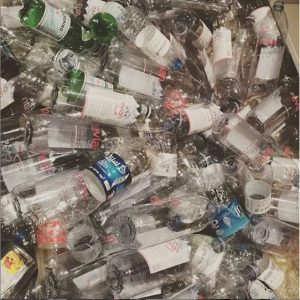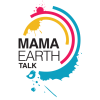
In this episode, I will be talking to you about microplastic. These little particles seem to be making their way into the ocean, our environment, food chain and as a recent study has found microplastic in our guts. We will be looking at what exactly they are and I will also provide you with some tips for you to look out for when buying beauty products to make sure you do not buy something containing microplastics. I also provide tips on washing your clothes to reduce microplastics from entering our water sources as well.
Episode Highlights
What is microplastics?
They are extremely small pieces of plastic debris that we find in the environment. This debris varies in size less than 0.2 inches or 5mm in size.
Microplastics are mainly created through two sources.
Microplastics are surely making its way to our food system. Recently 1 out of 4 fish tested from a Californian fish market contained microplastics.
The first is to minimise the purchasing of new clothing or textiles that are made from new plastic fibres. Instead, invest in clothing made from natural fibres.
Make sure you recycle properly. Less than 10% of plastics are recycled.
Avoid purchasing products with plastic microbeads.
Try to wash your clothing less and in the cases that it does require a wash try to capture the microplastics.
Key Take Away
“Recently 1 out of 4 fish tested from a Californian fish market contained microplastics.”
Plastic seems to be everywhere and it is making its way into our food system as well. If we do not change our habits we will be facing more and more problems every single day.

About the author, Mariska
Hi, I’m Mariska – podcast host, artist, sustainability advocate and consultant, and storyteller driven by a deep passion for our planet. Sustainability isn’t just a topic I discuss; it’s a way of life I embody through my work, actions, and everyday choices.
My journey began several years ago when I started experimenting with trash as a medium in my artwork. What began as creative curiosity quickly turned into a deep dive into the environmental impact of waste. That curiosity expanded into a broader connection with nature—including a life-changing trek to the summit of Mount Kilimanjaro, where I found both clarity and purpose. It was there that I made the decision to leave the corporate world behind and commit fully to environmental work.
In 2018, I took that message public in the UAE by wearing every piece of trash I generated for 30 days. The result—65 kilograms of waste—sparked national conversations around sustainability and waste reduction. That bold experiment also became the catalyst for my podcast, Mama Earth Talk, where I’ve since connected with global thought leaders to explore sustainability and inspire meaningful action.
Over the years, I’ve collaborated with organizations such as Nespresso, Costa, and Dubai International Airport to implement practical and impactful environmental solutions. From optimizing waste management systems to leading awareness campaigns, I specialize in designing strategies that create real, lasting change.
My artwork—blending environmental advocacy with creative expression—has been collected by public figures including comedian Trevor Noah, environmentalist Adrian Grenier, entrepreneur Gary Vaynerchuk, radio host Kris Fade, Grammy Award-winning DJ Black Coffee, and NBA player Mason Plumlee. Through public speaking, podcasting, and art, I aim to inspire individuals and organizations to rethink their relationship with the environment.
With over a decade of international experience in design and project management across Australia, South Africa, the UK, India, and the UAE, I bring a unique mix of creativity and strategic insight to sustainability challenges. My global perspective allows me to collaborate across cultures, drive innovation, and empower others to make a meaningful impact.
As a lifelong learner and passionate advocate, I focus on practical, holistic solutions to environmental challenges—guided by systems thinking and a deep commitment to action. I hold a BA in Design, a postgraduate degree in Environmental Science, and a Master’s in Sustainable Design.


